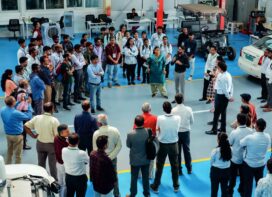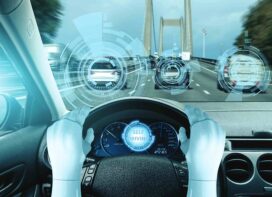You may like to speak about the station design as well…
The scope of the project need to be explained. We are trying to open Phase 1 now. The total length is nearly 20kms, lines 2A and 7, and there are 18 stations. Line 2A runs on the Linking Road and Line 7 runs on the western express highway; both are very important arterial roads which are highly congested with a choc-a-bloc every day.
So coming to the civil part, there are two things, viaduct and the stations. The stations have two levels, concourse level and platform level. Each of the station has been connected by staircase, escalators and lifts. We are planning stations in such a way that they are at a distance of a kilometre from each other. So from the midpoint of two stations maximum distance one has to walk is about 500 metres, not more than that, much less than that, so it is easy to walk. Secondly, each station is equipped with firefighting systems and we are keeping about 50,000 litres of water ready dedicated for fire engines.
As as far as the design part is concerned, it could have been better; but now we have inherited a system. The design has been what it is, let us see how it works. I am a little skeptical still about the effect of monsoons on the structures; whether water may come inside or not. We are taking all the steps possible. But design wise the stations look pleasant and SOPs for passengers are very simple and very clear. We have made some films as well to show how to enter and exit.
Standard global practices are being followed as far as the passengers and Mumbaikars are concerned, so for them it will be much simpler to go through the entire process. The tickets are based on QR code.
Coming to the rolling stock from BEML, what are the special features?
Yes, it is very special because it is under the Make in India programme; otherwise we were always looking towards foreign companies. Having said that, there are also several challenges. When a company does the metro systems for the first time they are also learning. So it was not easy at all especially during the last eight months. I must have had about 25 to 30 meetings with BEML. As you know, BEML is in Bangalore and the teams are split between the two cities. The electronics system are from Alstom and some of the software are from Hitachi. With most of the issues getting ironed out, we are going to run them very smoothly and we will do our best to make the journey most comfortable for the Mumbaikars.
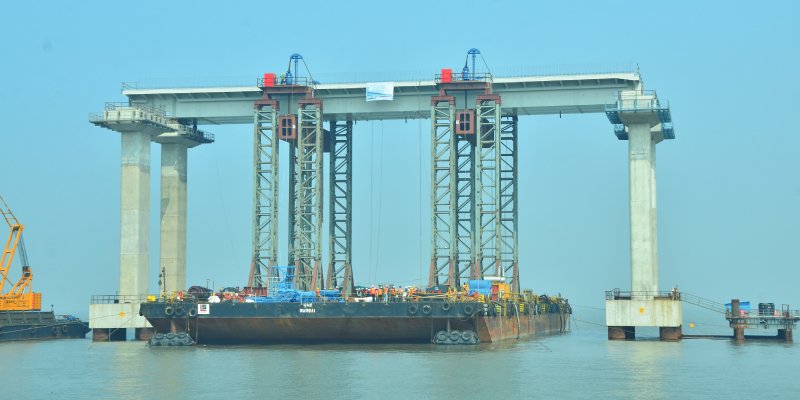
MTHL project, an understatement it would be to say, is a game changer because I call it a great disruptor as Mumbai, especially South Mumbai, will be directly connected with the rest of India which was never the case since the founding of Mumbai 400 years back.
There is sure going to be a learning curve…
As we were discussing, technologies are changing and there’s going to be a lot of learning. I am sure it will be much easier next time definitely. This is the first set of metro rail lines that are north-south in the history of Mumbai. We are very excited about this happening in the western suburbs specially. Fifty to sixty percent of the population lives in the western suburbs, so these lines will go a long way in easing the living in western suburbs.
Talking of Mumbai Trans Harbour Link…
The project landing cost of MTHL will be anywhere around Rs. 20,000 Crore. This is the longest sea bridge in Indian construction history. The challenges are many, about 45% was complete, now it is almost 60% in the last eight months.
The most complex task of Orthotropic Steel Deck being used for the first time in the Indian construction history has just started. These are manufactured in different countries like Taiwan, Japan, Korea and many other countries and are transported by ship. The first launch was successful and so also the second launch. Each Orthotropic Steel Deck will be launched extremely carefully, because the barge on which you have to carry the Deck is itself the size of a football field; it is as big as that and you can see several trucks going on that. It has a span up to 180 metres and the weight is as much as seven to eight Jumbo jets. It is up to about 1300 to 1800 tonnes. One elephant is about three to four tonnes, so just imagine the size of 1400 tonnes. We should be doing it very, very carefully. Doing work on the sea is not easy; people fall, have sea sickness, sometimes workers are not technically used to the process.
Our target is to finish it and commission it by the end of next year.
We have been trying to make certain changes. One is changing the wall like anti-crash barriers being constructed that were blocking the sea view from the 22km long bridge. So the drivers would get a tunnel effect like a horse with blinders. You would just be going. We have changed the design and we are going to have anti-crash barriers through which you can see the sea actually. So that design change was made just in time because once you construct the walls on both sides you cannot then change it. The design is followed possibly in Korea and elsewhere as well.
Secondly, as I mentioned, it is a huge project with huge cost implications. I was handling MTHL when I was in MSRDC as well. In fact, MTHL committee was first headed by JRD Tata who had recommended it; just imagine we are thinking of JRD Tata, and not even Ratan Tata. Since those days, this project was conceptualized and pending. What I thought was “why can’t we have a metro on that”, because Metro is meant for common man. So MTHL is not meant just for people who are owners of cars. Public transport should be encouraged.
We are also appointing some consultants to evaluate the possibilities to have a metro line but the loads have to be calculated carefully because the bridge is already constructed. A lot of things including the foundations have already been made. We are examining whether the bridge can take the load of Metro. Or else, if that is not possible, we will definitely run buses for the people of mainland MMR region as well as Mumbai. So that plan is also ready and in any case we will be running buses for first five years.
Which are the other projects close-to-your heart
There is Worli-Sewri Link which connects the coastal road of Mumbai to MTHL. In the last six months, we removed and rehabilitated about 400 slum structures. As I said, rehabilitation is a separate component. Both projects are going on in parallel and are connected to each other. It is a massive project actually, in fact, I will consider it to be more complex than MTHL because it goes through slums and so many other areas. It goes above the monorail station, so it is not easy to do that.
About seven to eight metro rails are under construction right now as we speak. We can speak about each one of them.
However, I would like to point out about two projects. One is the tunnel through Parsik Hill which connects Mumbai to Kalyan and Dombivli. That is a very important project, that will decongest Mumbra in Thane district. The Thane-Belapur road runs North-South. If you want to go there, you have to go via Thane or Mumbra and it is highly congested today. To bypass that, a project had been envisaged while I was actually here in MMRDA ages back. A tunnel was envisaged, and according to the CTS (Comprehensive Transport Study) it was incorporated. It is now under execution. We want to complete it in a years’ time. That will be a very major work as far as the connectivity of Mumbai to rest of MMR region.
Second, of course, the major one, but really not our forte is to give water supply to Vasai-Virar and Mira-Bhayander. Vasai-Virar as you know, is the fastest growing urban area in India. At one point of time, annual growth rate was 97%. Generally, cities grow at 5% or 10%. But this area has a huge water supply problem and industries are coming up as well.
The project we are envisaging is also one more last project I would like to speak about for which we are going to float tender soon. It is connecting Nariman Point to Cuffe Parade. Now coastal road stops near Princess Street and it may lead to issues. So accordingly, our Minister for Environment Aditya Thackeray has suggested that we should have a connecting road from Nariman Point to Cuffe Parade and Colaba where the maximum number of cars ply. So we are going to do that project to give the last mile connectivity.
MMRDA is not just a project implementing agency, it is a planning authority as well. We do regional plans, we are also special planning authority and thirdly we are also in-charge of BKC, the financial centre of Mumbai.
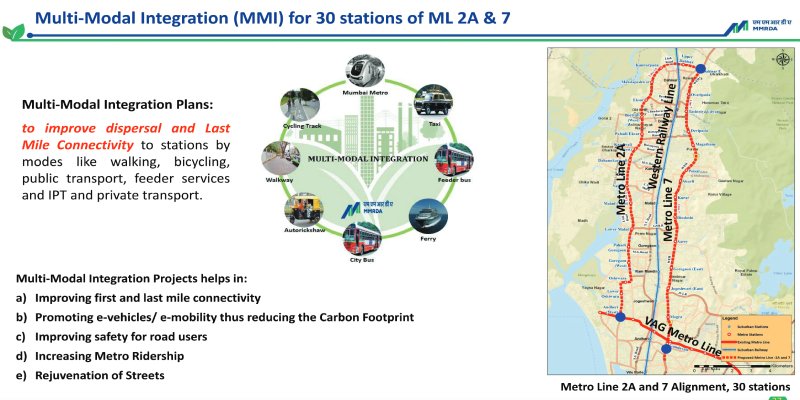
Lastmile connectivity is another major aspect of Urban transport. This includes cycles as well
Last mile connectivity for which we are doing multimodal integration at each station. We are actually planning in tandem with BEST to have feeder services for metro stations. Right now, the buses are running the same path as metro but once metro comes, these have to work as feeders. Accordingly, we have prepared plans and given to BEST and we are shifting the bus stands as well.
In addition to that we are also making plans for the IPT (Intermediate Public Transport) and thirdly the cycles that you had mentioned. We are trying to have cycle stands in all the metro stations and we are laying a track on the Western Express Highway which is again the brainchild of our Minister for Environment. The work has started and last mile connectivity will be overcome at least in lines 2A and 7.
On Eastern Express Highway, we are planning to do the same but that is not very easy. Right now, we are planning the concretization of both Western and Eastern Express Highways as both are 100 years old.
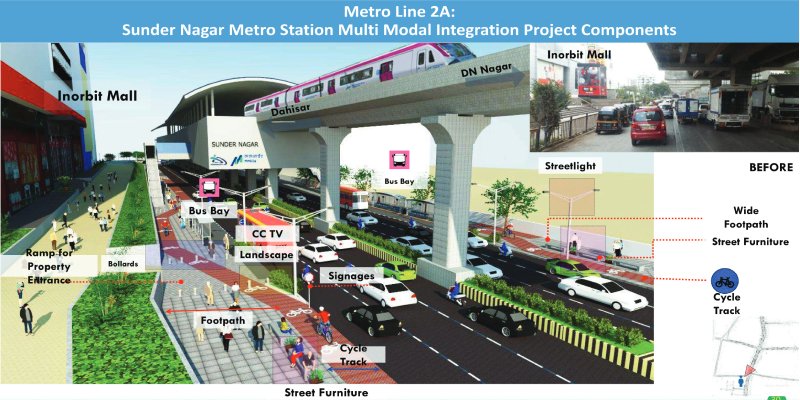
 TrafficInfraTech Magazine Linking People Places & Progress
TrafficInfraTech Magazine Linking People Places & Progress

